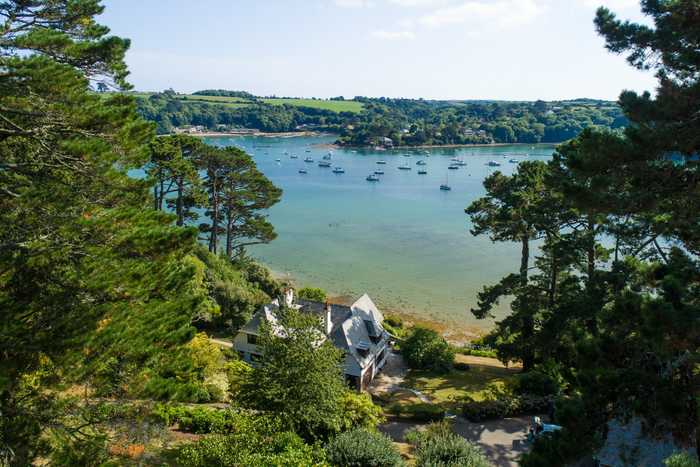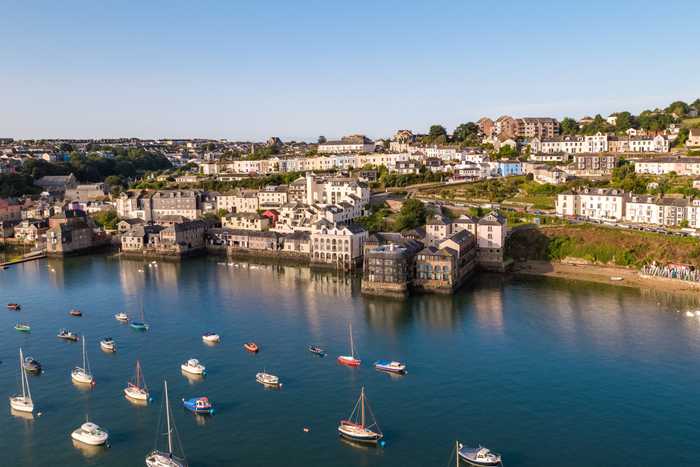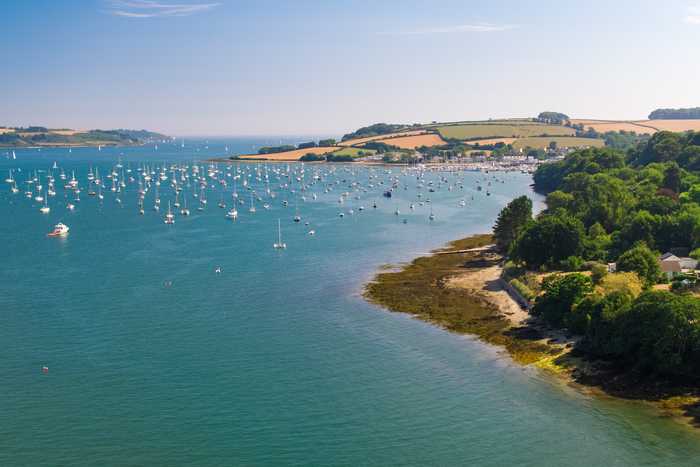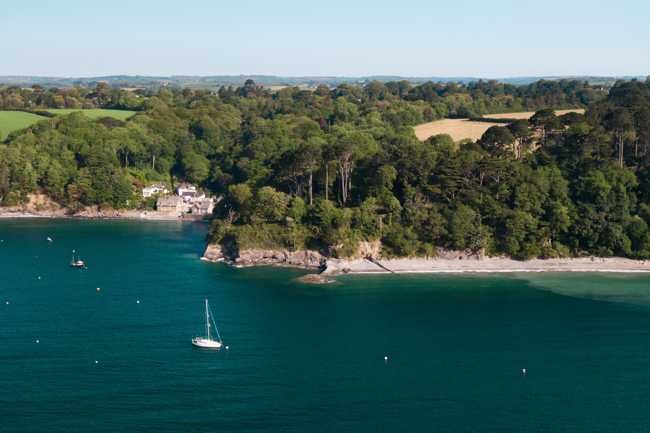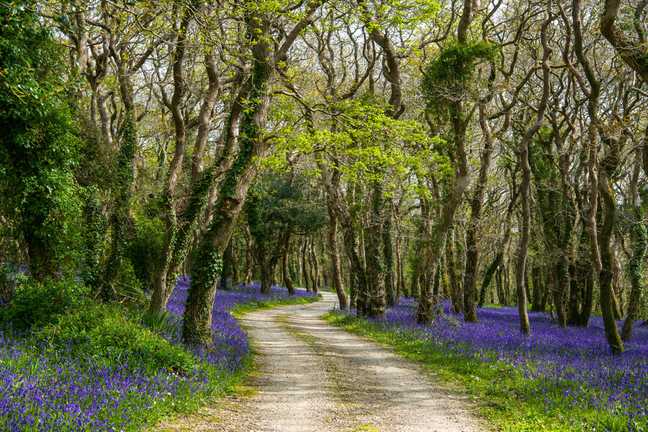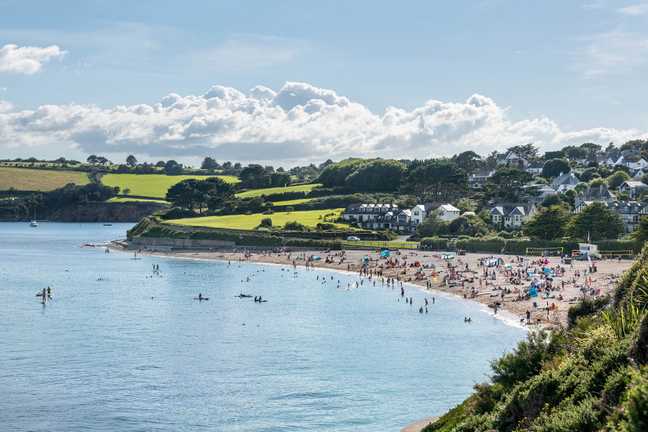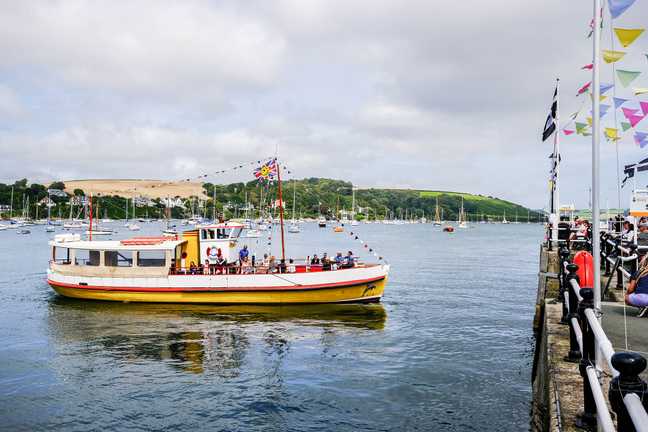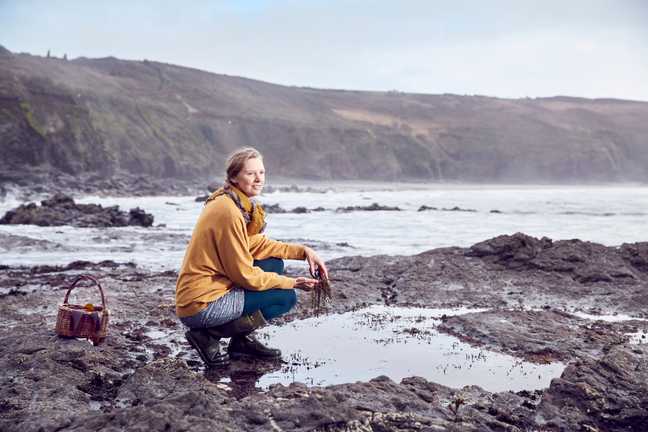Over the years Cornwall has been the setting of many narratives, myths and legends written by a handful of creative authors. There’s no better way to pay tribute to these luminaries than by following in their footsteps—literally. Visit hometowns, tour locations of inspiration, or walk the steps of fictional characters to breathe new life into these writers’ timeless words.
See below our list of favourite Cornwall-inspired books and the local locations that are featured and that you can visit for yourself.
Frenchman’s Creek by Daphne du Maurier
“When the east wind blows up Helford river the shining waters become troubled and disturbed and the little waves beat angrily upon the sandy shores. The short seas break above the bar at ebb-tide, and the waders fly inland to the mud-flats, their wings skimming the surface, and calling to one another as they go. Only the gulls remain, wheeling and crying above the foam, diving now and again in search of food, their grey feathers glistening with the salt spray.”
Frenchman’s Creek is a 1941 historical novel by creator of atmosphere and lover of Cornwall, Daphne du Maurier. A tale about love, pirates, sacrifice and responsibility, it tells the story of a love affair between an impulsive English lady, Dona, Lady St. Columb, and a French pirate, Jean-Benoit Aubéry.
Honeymooning in a cottage on the Helford River at Frenchman’s Creek, Du Maurier’s adoration for Cornwall and the Helford River area was all-encompassing.
Readers can tread the steps Du Maurier once paced easily from their holiday cottage, taking the ferry from Helford Passage over to Helford Village, following the coast path up Frenchman’s Creek to the cottage where she stayed. Here it’s easy to understand the magic and intrigue that this place once held and still continues to hold within the imagination. Frenchman’s Creek remains one of the quietest parts of Cornwall, with the tide lapping against the dense woodland that lines the creek you’d be forgiven for thinking that Du Maurier herself might just wander around the corner.
The Wind in the Willows by Kenneth Grahame
“The Mole was bewitched, entranced, fascinated. By the side of the river he trotted as one trots, when very small, by the side of a man who holds one spellbound by exciting stories; and when tired at last, he sat on the bank, while the river still chattered on to him, a babbling procession of the best stories in the world, sent from the heart of the earth to be told at last to the insatiable sea.”
The timeless adventures of Toad, Mole, Ratty and Badger in Kenneth Grahame’s The Wind in the Willows have long enchanted children and their parents for more than a century. Grahame’s ability to capture the ups and downs of human experience make his stories relatable and a brilliant tool for child learning.
Grahame had a great love for Cornwall and the county played an important role in the novel’s creation. When he wrote his legendary book, he was a regular visitor to the then Fowey Hall country house which is said to have been an inspiration behind Toad’s majestic residence, Toad Hall.
Kenneth Grahame never lived in Cornwall but he holidayed often in these parts and honeymooned in St. Ives with his wife Elspeth Thomson. In 1907 he spent time visiting the Fowey estuary, enjoying days on the water. This it seems became the inspiration for the first chapter of the book, when Mole and Rat meet and paddle up the river.
After his stay in Fowey Grahame spent some time at the Greenbank Hotel. The Falmouth-based hotel, which still overlooks the Fal Estuary, was the location he began to write the story that would become The Wind in the Willows, initially taking the form of letters that he sent to his young son Alistair.
Readers can stay at The Packet Quays, and visit the closeby Greenbank and its adjoining eatery The Working Boat, to dine on waterside fare and tipples while taking in the same estuary views as Grahame.
The Salt Path by Raynor Winn
“I could feel the sky, the earth, the water and revel in being part of the elements without a chasm of pain opening at the thought of the loss of our place within it. I was a part of the whole. I didn’t need to own a patch of land to make that so. I could stand in the wind and I was the wind, the rain, the sea; it was all me, and I was nothing within it. The core of me wasn’t lost. Translucent, elusive, but there and growing stronger with every headland.”
The Salt Path is an honest and inspirational true story of coming to terms with grief and the healing power of the natural world, and by extension, Cornwall. The book follows the epic true story of author Raynor Winn and her husband, Moth, who make the brave and impulsive decision to hike the 630 miles of sea-swept South West Coastal Path after discovering that Moth has been diagnosed with a terminal illness.
Carrying only the essentials for survival on their backs, they live wild in the ancient, weathered landscapes of cliffs, sea and sky. Winn has now become the ambassador for the Coastal Path Charity and her book has encouraged readers not only to rediscover what is important but has inspired many to follow in her footsteps along the coastal path.
To appreciate the journey that Winn undertook, you must also have a strong sense of adventure. A local walk based in the Helford and Falmouth area, and featured in the book, is the 14-mile stroll from Portloe to Falmouth.
This is a moderate walk graced with lighthouse, castle and beach views, and paths that twist and plummet through woodland areas, open fields and unspoilt harbours.
The Ancient Woods of the Helford River by Oliver Rackham
“This is oak country, and the oaks have that surprising variety of size and shape that only Cornwall and Devon oaks can offer. Smooth wooded hillsides, subtly mottled with the different greens or browns of individual oak trees, sweep down to the high-water mark.”
The Helford River in Cornwall is a place of wonder and delight and one of the few places in England where ancient woodland meets the sea. Oliver Rackham (1939-2015) was the pre-eminent botanist of his generation, whose work focuses on trees and woodlands.
Published in collaboration with the woodland trust and illustrated throughout with photographs, maps and diagrams, this book forms the second volume in the regional series, The Ancient Woodlands of Britain. Describing the geology, history and floral of twenty-five individual woods, The Ancient Woods of the Helford River explains how these special places have survived the centuries and what the future may hold for them.
This wonderful book is an example of place-led study and an account of author Oliver Rackham’s findings, which runs through the centuries from the Pleistocene to the present.
Readers can explore the pathways lovingly trodden by Rackham along the shoreline where the oaks reach out and dip their boughs in the water. One of our favourite walks to follow in this area is the Helford Passage circular walk, where the mild climate and south-facing slopes allow subtropical plants collected by Victorian expeditions to flourish in the gardens of Glendurgan and Trebah.

